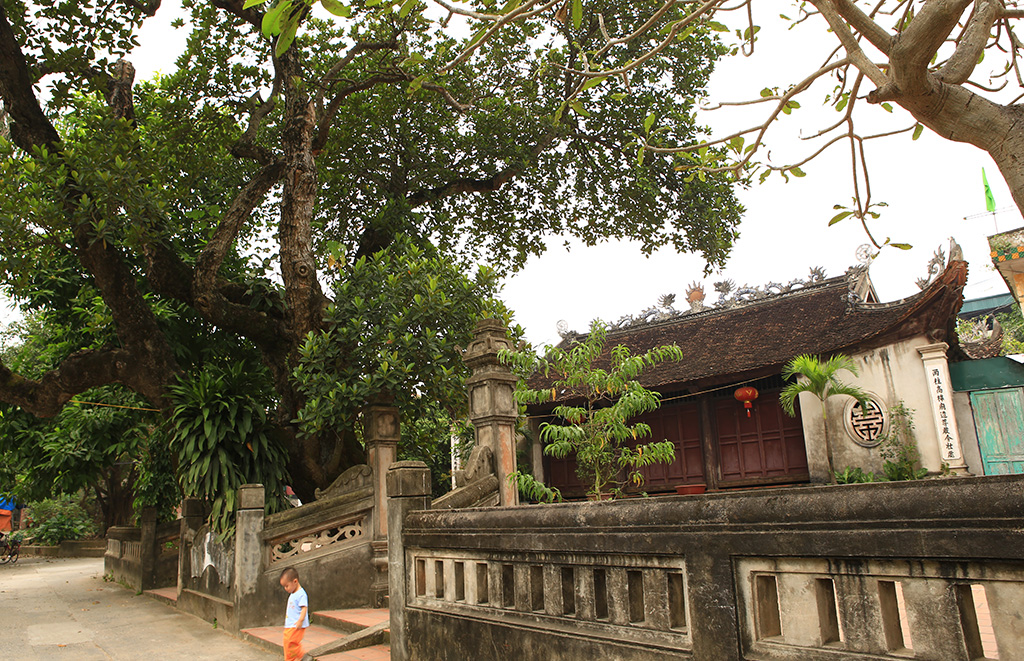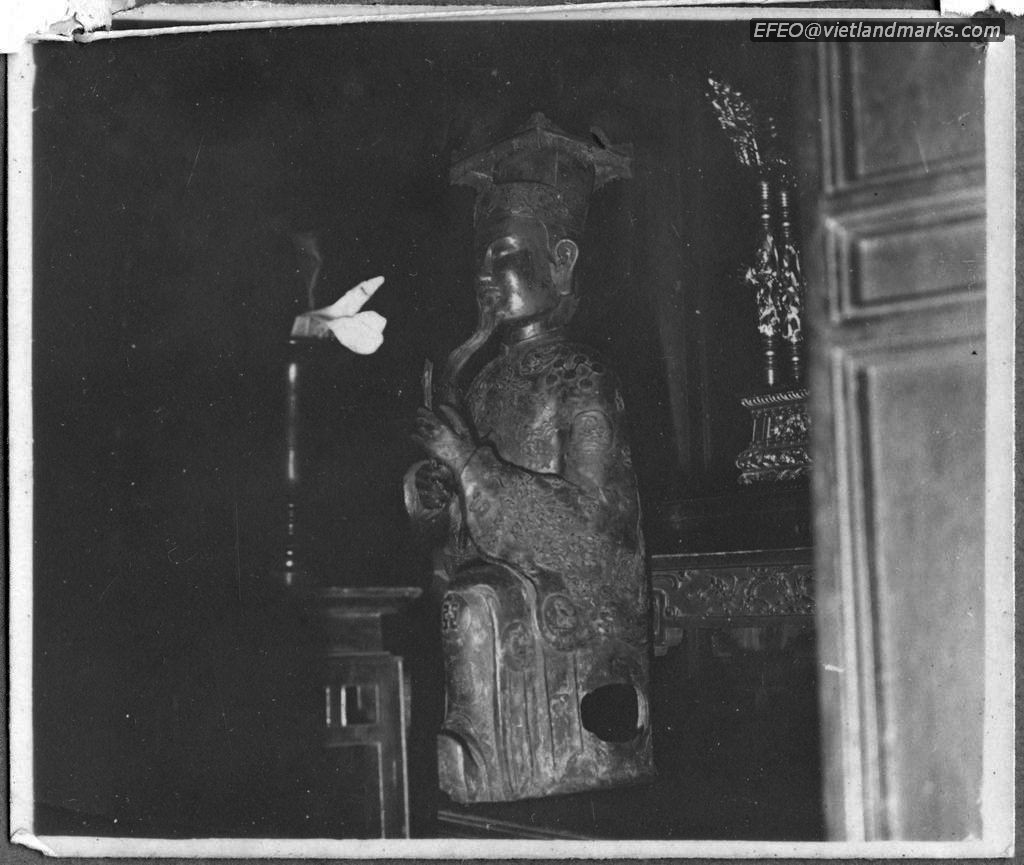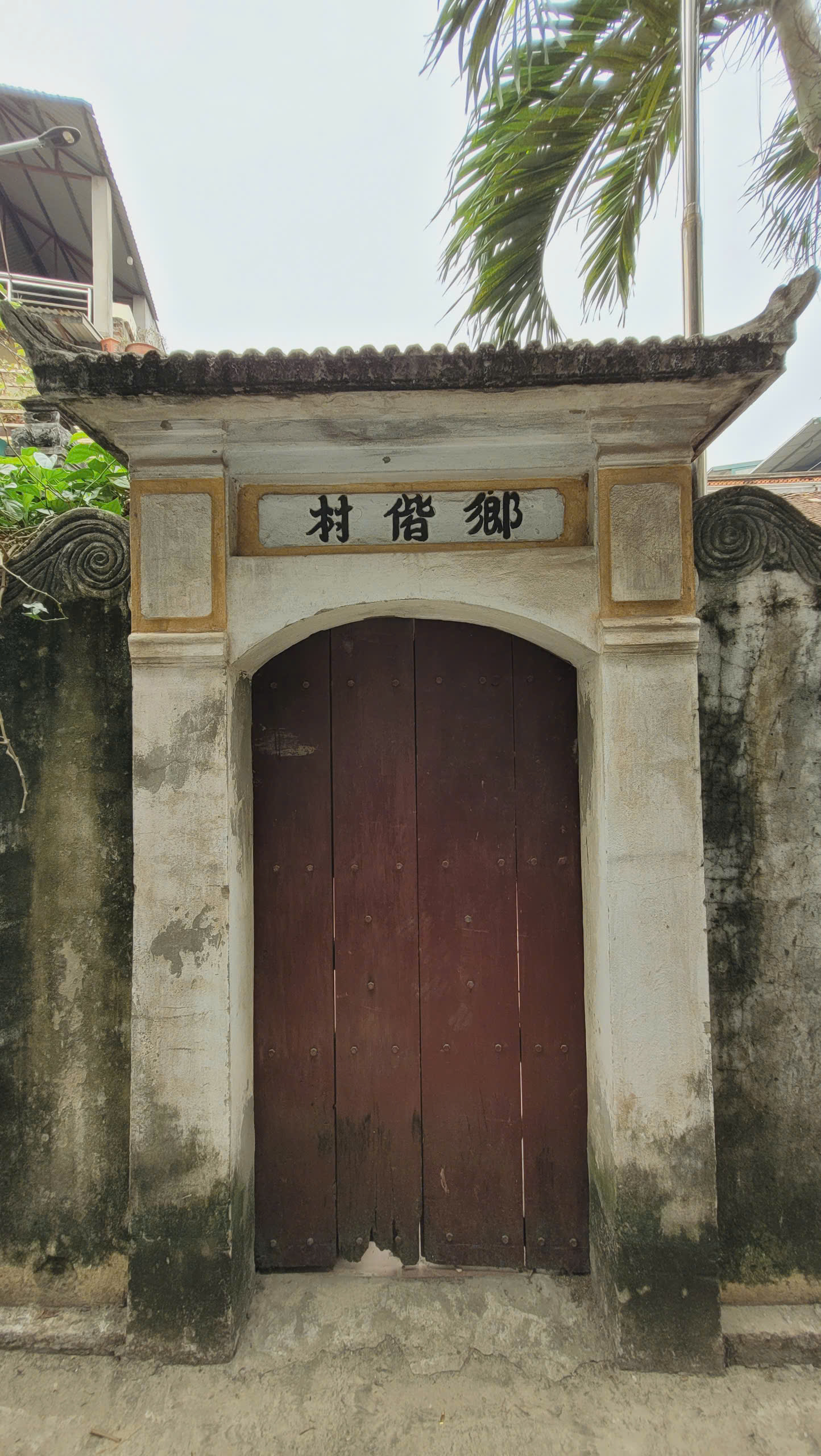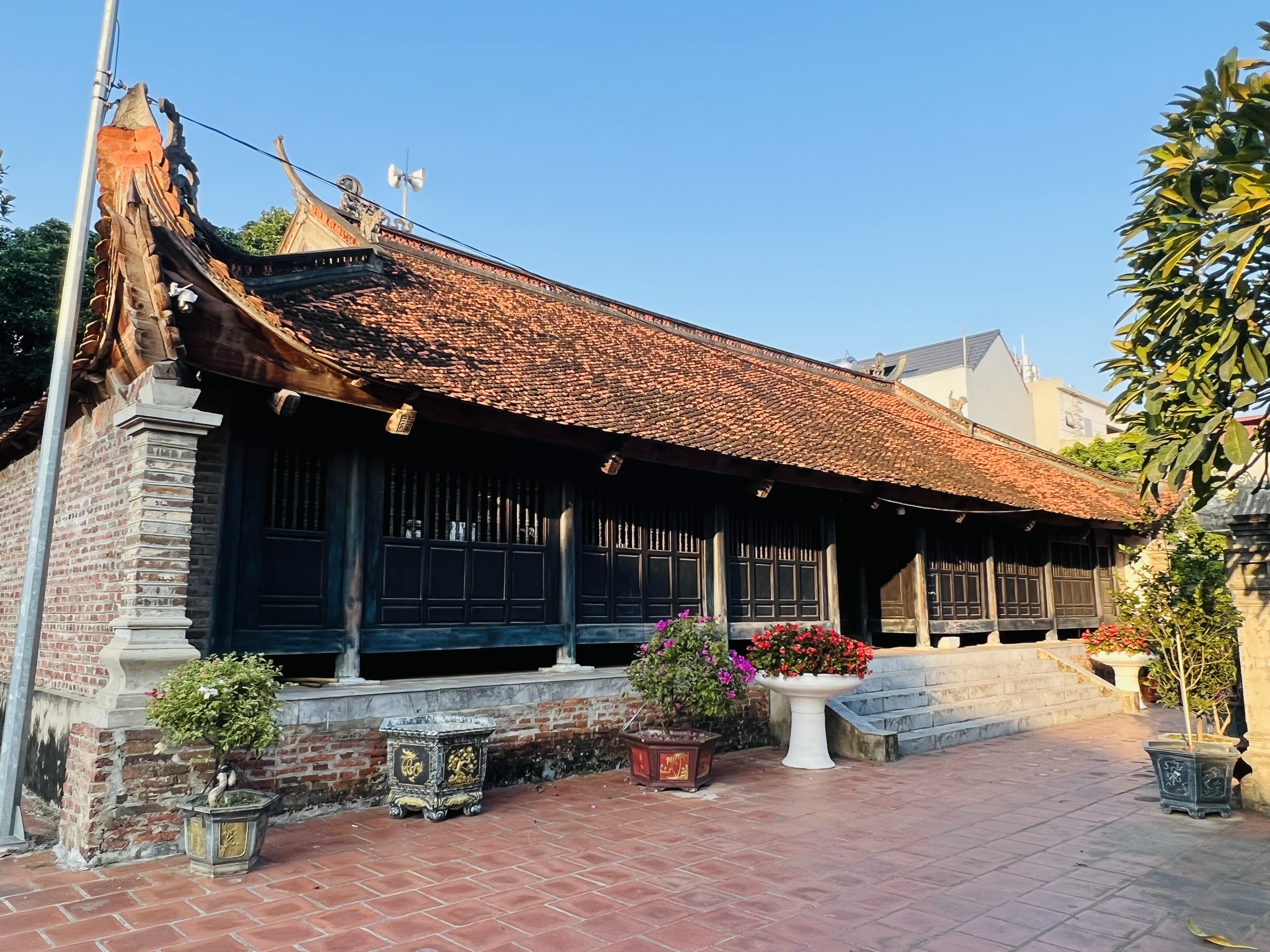
From Sa market, entering the South gate of the citadel is Cho village. Cho village today is one of two villages within the land area of the ancient Noi - Co Loa citadel and is one of 15 villages in Co Loa commune, Dong Anh district, the suburbs of Hanoi today. The border location of this Cho village is as follows:
- North: bordering Huong village.
- South: adjacent to Hoang Giang River.
- West: adjacent to Chua village.
- East: bordering Vang village.
Cho village has the Chinese name Ngo Thi village. According to folk explanation, the reason why the village has such a name is because in the past, this place used to be a bustling trading area. Cho village is located near the Tran Nam gate of Co Loa citadel, in front of Hoang Giang river, there is Sa market, so gradually the population concentrated to live and trade crowdedly. The people of Cho village in the past only specialized in trading and running the market.
Cho village has a long history, the population consists of Vietnamese and a small number of Chinese. However, through a survey of the clans in the village, no clan has survived for more than 15 generations. In addition to the Dao Duy clan (the largest clan), clans such as Nguyen, Chu… also account for a large number.
The Dao Duy family is the largest family in the village. The Dao Duy family genealogy consists of 5 stone steles engraved on one side. The middle stele is named: Dao family genealogy, the two steles on the sides are Dao family at chi and Dao family giap chi, the remaining two stone steles record the posthumous offerings. According to the stele, the Dao family: "Since the Le dynasty encountered many wars, the family genealogy and ancestral temple of our family were lost. So in the year Dong Khanh, Mau Ty (1882), in the winter, the seventh generation descendant, Dao Duy Than, respectfully compiled the genealogy. The family ancestral temple of our family began to be built in the year Thanh Thai 9, the year Dinh Dau, the stone steles were engraved in 1919". The genealogy also shows that the ancestor named Dao Viet Thuan originally came from Thanh Hoa, and currently in Thanh Hoa there is still the Dao family...
In addition to blood relations, homosexual relationships are also considered in an organization called the "giap". In the past, the village's "giap" organization was a practical and essential form of management. In the village, young people from eighteen years old and above were allowed to participate in village work. When they reached the age, they had to buy "loi", and if they did not have money, they could hold a ceremony. However, in many cases, if the village lacked money, they could sell "loi", and children from two to three years old and above could also buy them. If a person in the village had a rank of eighth rank or higher, he or she could become a "tien chi". The "tien chi" was responsible for writing the sacrificial text and presiding over the communal festival activities of the whole village. When there was a feast, the "tien chi" would only eat one tray alone. In the village, if anyone had a lot of fields, they could bid for that position. Every year, everyone had to pay taxes to the village in rice or money. Poor farmers without fields paid 8 hao, middle farmers paid 6 hao. In the village, any family that has buffaloes or cows must pay a tax of 1.2 cents to the weekly chief every 1 to 2 years.
The organization of the hamlets in Cho village is divided by lane or by clan. Young people at the age of 18 join the hamlet and once they join, they cannot leave. Members of the hamlet are responsible for carrying out the common tasks of the hamlet as well as the village. The head of each hamlet is the hamlet chief elected by the commune, this position is held for life. When a member of the hamlet dies, the commune will appoint another person to replace him. There is no distinction between the hamlets, if a member of the hamlet has work, the other members have the responsibility to help each other. If a family member of the hamlet has a funeral, the remaining members are responsible for carrying the body, people from other hamlets are not allowed to participate in this work. In the village, each clan is a hamlet.
In the past, Cho village had a custom of making friends with four other villages: Dong Tru, Hoi Phu, Dong Tao, Van Ruom. The purpose of making friends was to help each other in life as well as to fight against foreign invaders. Those who participated in the friendship respected each other and often called each other "big brother", each village often set aside a day for welcoming each other called "tien huong". On this day, they prepared a feast and invited the four brothers to eat. Eating the feast, also known as eating the "yen" (full moon), usually took place at night. The feast usually had 8 plates of ham, 8 plates of meat, 8 bowls of soup, 4 green rice cakes, 4 fried cakes, and 4 bananas.
Cho village is mostly located within the inner citadel, and a part of it is located between all three walls (the southern section - Sa market). The typical cultural works of the village today include: the South Gate temple, Tranh temple and Cho hamlet temple (Big temple). The South Gate temple (Tran Nam Mon) of Cho village is located on the west wall. According to folklore, the South Gate temple worships the general guarding the South Gate of the ancient Co Loa citadel. Currently, this god is worshiped in the village temple.
Tranh Inn is located on the inner citadel. It is said that Tranh Inn was originally used as a place for patrolmen in the village to sleep (eight patrolmen a year) to guard and protect the village and fight against foreign invaders. In the past, the inn was roofed with bamboo and thatch, hence its name.
The Cho village temple is the communal temple for the whole village, the largest in scale as well as the most solidly built and beautifully decorated. The temple is also known as the Big Temple. The temple faces south, in front of it is a large lake which, according to the people, is a section of the ancient Hoang Giang River. The Cho village temple used to be a place for cultural activities of the people in the village. In the past, the temple was also a place to organize banquets due to the custom of Cho village with other villages such as Dong Tru... Some opinions say that the temple worships the local god, the communal guardian spirit of the whole village. Some people think that the temple worships Mr. Trieu Quang Vinh. Sharing this view, there are also opinions that the temple worships Mr. Trieu Quang Vinh (from Hung Yen), on the left and on the right worships Mr. Long Dung Than Quang (from Tam Dao). These two men are the ones who have contributed to guarding the South gate of the citadel. According to the people in the village, the temple worships the water god.
MANAGEMENT DEPARTMENT OF CỔ LOA VESTIGE SITE








